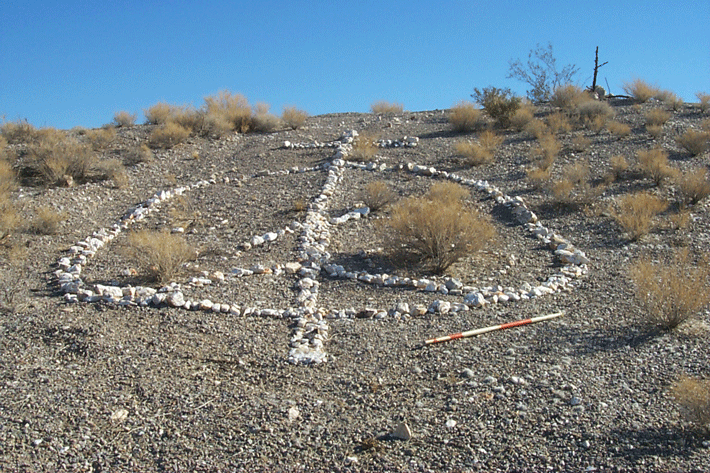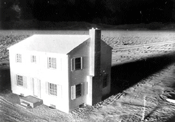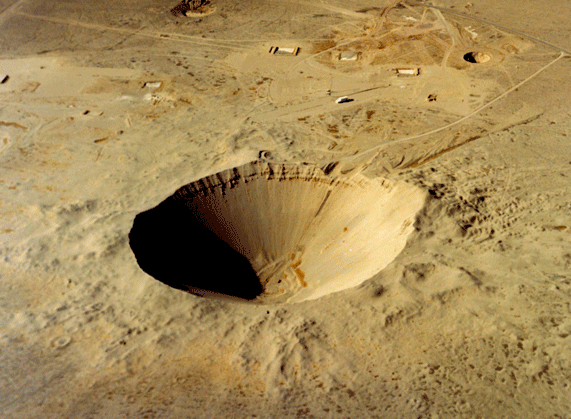Peace Camp
November/December 2014
 The nuclear-testing-related historical remains of the Nevada Test Site don’t end at the site’s borders. Beginning in the 1970s, a coalition of protesters established a permanent outpost on 600 acres of adjacent federal land. People who lived east of the Test Site (“downwinders”), peace activists, devout Christians, and Western Shoshone Indians (who claim the land under an 1863 treaty) made up a significant portion of the protest community. In the 1980s, it became officially known as Peace Camp. It had no water and only Joshua trees for shade, yet it drew together members of 200 different organizations. One event there hosted 8,000 people.
The nuclear-testing-related historical remains of the Nevada Test Site don’t end at the site’s borders. Beginning in the 1970s, a coalition of protesters established a permanent outpost on 600 acres of adjacent federal land. People who lived east of the Test Site (“downwinders”), peace activists, devout Christians, and Western Shoshone Indians (who claim the land under an 1863 treaty) made up a significant portion of the protest community. In the 1980s, it became officially known as Peace Camp. It had no water and only Joshua trees for shade, yet it drew together members of 200 different organizations. One event there hosted 8,000 people.
Colleen Beck of the Desert Research Institute (DRI) noticed the still-active protesters during her early years at the Test Site. “I have to admit there was a lot of curiosity about what these people do over there in the camp,” she says. She didn’t act on that curiosity until she saw a backhoe digging on Peace Camp land. “I began phoning and found out that they were looking at turning the area into a gravel pit. I realized there was a good chance it was going to be destroyed,” and with it, a significant part of the Test Site’s history. Beck secured a grant to document Peace Camp in 2002. While some protesters were suspicious of the early DRI efforts there, the Western Shoshone were supportive.
Beck and her colleagues have documented many features associated with the protest community, such as paths, campsites, sweat lodges, hearths, and stone cairns used as trail markers. Residents had covered a highway underpass in graffiti, and used stones to create “geoglyphs,” or large designs expressing political and spiritual beliefs. One depicts an eight-petaled flower with white rocks forming a triangle in the center. Down a trail from there, some rocks spell out “TTW,” a reference to Terry Tempest Williams, a downwinder from Utah who chronicled her family’s cancer history. The side of a hillock sports an enormous peace sign. With Beck’s documentation, the U.S. Bureau of Land Management, which owns the site, and the Nevada State Historic Preservation Office have determined that Peace Camp is eligible for listing on the National Register of Historic Places.

